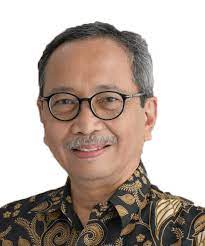Welcome to the Urban Safety Masterclass
INTRODUCTION
Gendered urban spaces are essentially spaces of inequalities. While the design of our built environment does not by itself cause crimes, it does play a significant role in creating opportunities for them. Everyone, including those who are vulnerable – women, children, disabled, elderly, migrant - has a right to safe access in the cities they live in. They have a right to use, experience and enjoy the city freely and confidently. Preventing hostile environments from shaping up by deliberate planning and assessment can create cities which are safe and friendly for all.
Space, like Gender, is socially constructed. The spatial arrangement of our buildings and communities reflect and reinforce the nature of gender relations in the society. It is because of such social context of built space, women’s choices to participate in public life are limited. These limitations have deeper ramifications like that of personal and economic growth.
Hence, the constructs of ‘gender and space’ needs to be investigated with a feminist lens to challenge the inequalities embedded within such constructs.
A city is home to diverse group of people from various socio-cultural-economic backgrounds, age groups, genders – who use and experience the city uniquely. City development plans and policies rarely acknowledge this plurality in order to make it inclusive. Instead the norm has been to plan and provide for a single dominant group aka the able-bodied men – the imaginary average citizen. Such masculine, top-down planning approaches, having none or under representation by the vulnerable communities, results in a hostile city for the groups whose needs are unidentified, unaccounted for, unmet with. This further deepens their vulnerabilities and they continue to remain invisible and/or illusive. The experience of women in the city particularly is multifaceted, determined by the intersection of gender with other identities to produce exclusion in complex ways. One such exclusion is the declining rate of employment, low participation in the workforce and contribution to the economy – key factors which subsequently widens the Gender Gap. Thus, the link between physical space and women’s status and economic output is evidently clear.
Another primary reason for such exclusion in cities, is the unavailability of gender disaggregated data, mapping and analysis of such information for provisioning the needs of women. This lack of understanding of how women use and experience the city differently poses a major hurdle when taking women’s needs into consideration. Below are the broad aspects which compound gender inequality at various levels.
- social, structural and physical restrictions imposed on women’s access to opportunities and resources (education, employment, services)
- lack of adequate social infrastructure and amenities as support functions (housing, transportation, healthcare, welfare centres, public toilets, etc) to help women fulfil their multiple roles and responsibilities
- lack of safety on streets, public spaces and public transport to enhance women’s access to public space
- no or very low representation in decision-making in city planning and development
- all the above collectively have adverse effects on women’s perception and experience of the city, on realising their full potential and on functioning independently as rightful citizens
Hence, it is imperative to raise the question of women’s status in the city and argue that these structural inequalities result in women’s inability to enjoy full citizenship.
We need to unpack these geographies of exclusion that have come to define our cities in order to advocate for the design of safer and more inclusive cities. Safetipin, through the process of conducting safety audits over the years in cities in India and in the global south, has identified some of the key elements for building cities that are inclusive, safer and accessible. In almost all the safety audits, it was found that public spaces are poorly planned and designed from the perspective of the most vulnerable. Safety audits have consistently pointed out that well-designed, well-lit and well-maintained spaces are more likely to be used by a more diverse set of users to realise their full potential and participation in cities.
This course will help you identify these exclusions in urban spaces from a vulnerable group’s perspective. It will help build your team’s capacity to recognise the challenges people face in accessing urban spaces by using various tools and techniques. And finally, it will help in building innovative solutions to address urban safety issues in your city.
OBJECTIVES:
- To understand the adverse impact unsafe, inaccessible, and inequitable spaces have on the lives of women and others.
- To identify the 5 key issues that could be addressed to make cities safer and more responsive to women and others.
- To use effective tools and methods of engagement with the community (of women and other vulnerable groups) in making cities safer and more equitable.
- To have first-hand experience in evaluating urban spaces and recommending innovative solutions to address urban safety.
MODULES:
- What is Urban Safety?
- Principles of Making Cities Safer, Responsive, and Equitable.
- Tools for Making Cities Safer, Responsive, and Equitable.


























